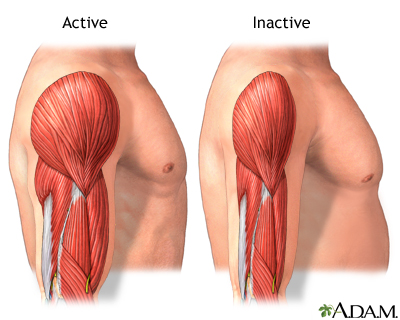ACL surgery, an essential procedure for active individuals, can result in a frustrating outcome: loss of muscle. This blog explains the causes of muscle loss after ACL surgery, its impact on the body, and how the expert team at The Cruciates ensures full recovery.
Understanding Muscle Loss After ACL Surgery
Muscle loss following ACL surgery, specifically in the calf and thigh muscles, is a typical issue that patients face. This is due to muscle atrophy, a condition where muscles lose strength due to inactivity or restricted movement after surgery. The body’s natural response to injury is to reduce activity, leading to muscle weakness, which can make the recovery process seem longer than expected.
Why Do You Lose Muscle After ACL Surgery?
The most common reason for muscle loss after ACL surgery is inactivity. Post-surgery, the knee joint requires time to heal, leading to prolonged periods of restricted mobility. Reduced movement can limit blood flow to muscles, causing atrophy. This issue is often compounded by pain and swelling, which makes even light physical activities difficult for patients.
Additionally, the body prioritizes healing the injury, which may reduce the energy and nutrients available for maintaining muscle mass. This highlights the importance of managing muscle health post-surgery.
ACL Muscle and Post-Surgery Recovery
The ACL (anterior cruciate ligament) connects the thigh bone to the shin bone, playing a crucial role in stabilizing the knee joint. After surgery, the muscles around the knee, particularly the quadriceps (thigh muscles), tend to weaken. The weakening of ACL muscles and surrounding tissues can significantly impact strength and mobility, extending recovery time if not properly addressed.
At The Cruciates, renowned for their expertise in ACL procedures, a structured rehabilitation program is implemented to prevent muscle loss. Their approach includes advanced physiotherapy, targeted exercises, and individualized care, ensuring patients regain muscle strength effectively.
Muscle Atrophy After ACL Surgery: What to Expect

Muscle atrophy refers to the wasting or thinning of muscles. After ACL surgery, patients may experience significant atrophy, primarily in the quadriceps and hamstrings. The extent of muscle atrophy varies depending on the severity of the injury, type of surgery, and duration of inactivity.
Immediate physical therapy is essential to prevent extensive muscle atrophy. The Cruciates follow an aggressive but patient-friendly rehabilitation approach, focusing on strengthening and mobility through progressive exercises. This method minimizes muscle loss and helps patients return to their normal activities faster.
Managing Thigh Pain After ACL Surgery
Thigh pain is a common complaint after ACL surgery, often due to the trauma from the procedure and weakness in the thigh muscles. Pain may also result from inflammation or improper alignment during the healing process.
The Cruciates offer personalized post-operative care to address thigh pain and provide quick relief. Their team, comprising top physiotherapists and orthopedic specialists, focuses on reducing discomfort while restoring muscle function. Through a balanced approach of rest, pain management, and targeted exercises, The Cruciates help patients overcome thigh pain effectively.
Why Choose The Cruciates for Your ACL Recovery?
Choosing the right specialist for ACL surgery and recovery is crucial for a complete, complication-free recovery. The Cruciates are known for their expertise in ACL injuries, muscle atrophy management, and post-operative rehabilitation.
Their patient-centered approach combines advanced surgical techniques with comprehensive recovery plans tailored to individual needs. With a team of experts in physiotherapy, orthopedic surgery, and sports medicine, The Cruciates provide holistic care that goes beyond the surgery. Their commitment ensures that patients not only recover from the procedure but also regain strength, mobility, and confidence.
Conclusion
Muscle loss after ACL surgery can be a challenging but manageable part of recovery. By understanding the causes and effects of muscle atrophy and working with experts like The Cruciates, patients can significantly reduce recovery time and regain strength faster. The key to success lies in immediate post-operative care, individualized rehabilitation, and expert guidance throughout the healing process.
FAQs
Q1: How long will it take to recover muscle strength after ACL surgery?
The recovery process varies, but most patients begin regaining muscle strength within four to six weeks with proper physical therapy and rehabilitation.
Q2: What exercises help with muscle atrophy after ACL surgery?
Specific exercises like leg lifts, squats, and hamstring curls can help build muscle strength after surgery. These should be performed under the guidance of a professional.
Q3: Is thigh pain long-lasting after ACL surgery?
Thigh pain can persist for several months but should diminish over time with proper physiotherapy. Persistent pain should be evaluated by a doctor.
Q4: Can The Cruciates help with muscle loss after ACL surgery?
The Cruciates offer a structured rehabilitation program tailored to individual needs, focusing on minimizing muscle loss and accelerating recovery through advanced therapies.
Q5: How important is nutrition for muscle recovery after ACL surgery?
A balanced diet rich in protein, vitamins, and minerals is essential for faster muscle recovery post-surgery.
also visit: authortalking



